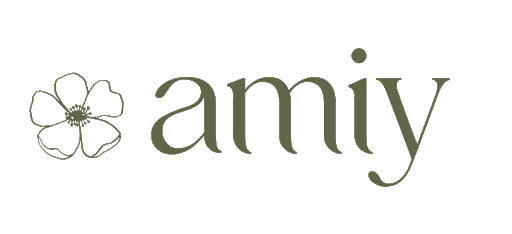




What are you looking for?

Neck pain remedies that actually help—stretches, heat vs cold, sleep and desk fixes, plus gentle natural support. Simple, India-friendly tips for faster relief.
Neck pain can creep in after long laptop hours, poor sleep, or sudden strain. The good news: simple neck pain remedies done right—gentle movement, smart heat or cold, and small posture fixes—often calm pain within days. Below is a clear plan you can try at home, plus when to seek care.
Quick take: Move little-and-often, use the right temperature at the right time, fix pillows and desk height, and add gentle natural support if needed.
Long screen time with the head pushed forward strains small neck muscles.
Night pillows that are too high or low keep neck joints jammed.
Sudden “check behind while driving” twists can irritate soft tissues.
Stress tightens shoulder and jaw muscles, adding to neck stiffness.
Old injuries and weak deep-neck muscles make flare-ups more likely.
Poor laptop setup (low screen, arm reach) keeps the neck in an awkward angle (WHO notes work-related neck strain is common in poor setups).

1) Heat or cold—what should I use?
First 24–48 hours after a fresh strain: use cold (wrapped ice pack) for 10–15 minutes, 2–3 times a day to calm swelling.
After 48 hours or for chronic stiffness: switch to warmth (hot water bag or heating pad) for 15–20 minutes to relax tight muscles.
Combining thermotherapy with simple neck-stabilisation exercises showed better relief in chronic nonspecific neck pain than exercise alone in a clinical trial. (PMC)
Tip: Always put a thin cloth between skin and pack; never sleep on a heating pad.
2) The three safe stretches (do them gently)
Chin tuck against a wall: Stand tall, gently draw chin straight back (no tilt), hold 5 seconds, repeat 8–10 times.
Side bend unlock: Sit upright, tip right ear towards right shoulder without lifting the shoulder, hold 10 seconds, repeat both sides 5 times.
Shoulder blade squeeze: Sit or stand, squeeze shoulder blades down-and-back, hold 5 seconds, repeat 10 times.
Move within comfort. Mild pull is okay; sharp pain is not.
3) Mini movement breaks (every 30–45 minutes)
Look far away for 20 seconds; roll shoulders 5 times.
Stand up, place elbows on ribs, rotate head Left–Centre–Right (slow), 5 cycles.
Do two chin tucks before you sit again.
4) Sleep fixes that matter tonight
Use a medium-height pillow that keeps your neck level with your spine—no tilt up or down.
Side sleeper: ear should line up with the centre of your shoulder. Back sleeper: pillow should fill the neck curve, not push the head forward.
Avoid stomach sleeping for a week during flare-ups.
5) Desk tweaks that reduce tomorrow’s pain
Screen top at eye level; keyboard close so elbows stay by your sides.
Hips and knees at roughly 90°, feet flat; bring the screen to you, don’t poke your head forward.
Raise the laptop on books and use an external keyboard/mouse if possible (WHO ergonomics guidance supports these principles). (Iris)
6) When breathing and heat work together
Try 5 slow breaths (4-in, 6-out) while using a warm pack; it reduces muscle guarding.
Some studies also suggest local heat plus routine care can improve outcomes in neck pain; use it as an add-on to movement, not a replacement.
Most people with simple stiffness do well with gentle mobility and posture work. If you have numbness, shooting pain to the arm, severe headache, recent trauma, fever, or weakness in the hand, stop and seek medical care.

Morning (5–7 minutes)
Warm shower on neck/upper back for 2 minutes.
Chin tucks + side bends (light, slow).
Shoulder blade squeezes.
Work blocks
Movement break every 45 minutes (timer helps).
Keep phone at eye level to avoid forward-head posture.
Evening
15–20 minutes warm pack (if not in the first 48 hours).
Short breathing practice + two stretch cycles.
Do: brief rest, heat/cold as above, light stretches, ergonomic fixes, magnesium-rich foods (nuts, greens), adequate water.
Avoid: sudden neck cracking, heavy lifting in the first few days, sleeping on multiple pillows, day-long collars without medical advice.
Amiy’s approach focuses on nervous-system balance (Bio-Neuromodulation™) and synergistic botanicals (Complex Plant Elixir™) that may help ease muscle tension and day-to-day aches. Consider pairing the routine above with Muscle Mercy for soreness support, and Tranquil Tonic if pain is disturbing sleep. Use as directed; results vary by person.
Educational note: Herbal support works best with posture changes, movement, and sleep fixes—never as a stand-alone “cure”.
Pain after an accident or fall
Pain with fever, weight loss, or severe headache
Numbness/tingling or weakness in arm/hand
Pain lasting >2–3 weeks despite home care
Known cervical spondylosis with new symptoms
Related reads (internal)
Herbal remedies for anxiety: calm mind, better sleep | Amiy Naturals
Natural remedies for stomach pain: quick, safe relief at home | Amiy Naturals
Medical disclaimer: This content is for education only and is not a substitute for professional medical advice. Please consult a qualified healthcare provider for personal care.
In the first 48 hours, use a cold pack for 10–15 minutes, 2–3 times a day, plus brief rest and gentle range-of-motion. After that, switch to warmth and start easy chin tucks and shoulder blade squeezes.
If it’s fresh, swollen, or sharply tender, choose cold. If it’s tight, achy, or long-standing, choose heat. Both are most effective when paired with light exercises and posture fixes. (PMC)
Chin tucks, gentle side bends, and shoulder blade squeezes. Move slowly, stay within comfort, and stop if you get arm numbness, severe headache, or sharp pain.
Yes. A pillow that is too high or too low tilts your neck and stresses joints. Aim for a medium-height pillow that keeps your neck level. Side sleepers need more height than back sleepers.
Usually not for simple strains. Long collar use can weaken muscles. Use only if advised after injury or as a short rest tool under guidance.
If neck pain keeps returning, pair the above routine with gentle support. Muscle Mercy may help ease everyday muscle tension after screens and travel. If sleep suffers, Tranquil Tonic may support calm nights so your neck can recover. Choose consistency over intensity; small daily steps add up.
You can also search for: Acne Remedies Simple Safe Home Solutions | Ayurvedic Remedies For Menstrual Cramps | Back Muscle Cramps Remedies | Best Natural Remedies Acid Reflux Elderly | Blocked Nose Remedies Breathe Easy Fast | Dry Skin Remedies Simple Natural Fixes That Work | Dust Allergy Remedies Simple Relief For Indian Homes | Female Bloated Stomach Remedies | Herbal Remedies For Anxiety Calm Mind Better Sleep | Muscle Tear Remedies | Natural Herbal Remedies | Natural Remedies For Acid Reflux Simple Fixes That Work | Natural Remedies For Anxiety During Pregnancy Safe Tips | Natural Remedies For Gas And Bloating | Natural Remedies For Menstrual Pain | Natural Remedies For Rheumatoid Arthritis | Natural Remedies For Sciatica Simple Relief Tips | Natural Remedies For Swelling After Surgery | Natural Remedies Psoriasis | Neem Benefits A Natural Remedy For Your Skin And Health | Remedies For Leg Cramps | Remedy For Muscle Cramps | Sciatica Natural Remedies Easy Relief At Home | Stiff Neck Remedies | Stomach Infection Remedies Safe Relief At Home